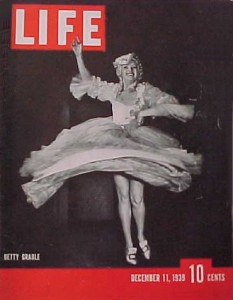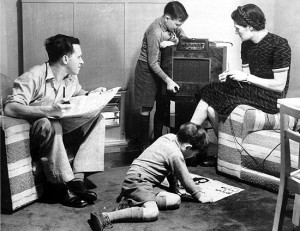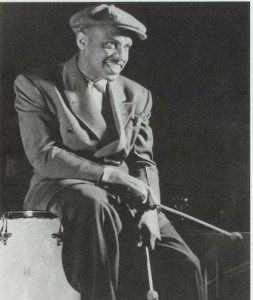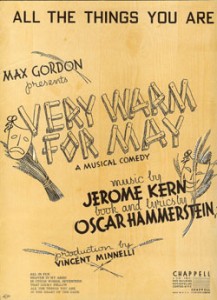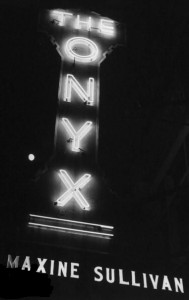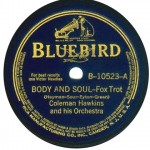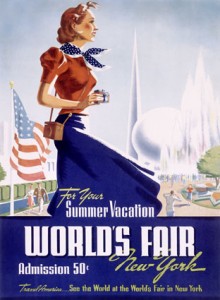A decade after the crash that caused the Great Depression, Americans were eager to embrace a new sense of hope. In 1939 some of the best movies and pop songs of all time lightened the load for the 17.2 % of the population still without a job.
What a year it was! Betty Grable’s famous legs appeared on the cover of Life magazine, and Superman and Batman debuted in the comics. It was the year of the first broadcast television programs, Pan Am introduced the first commercial flights across the North Atlantic and both The Wizard of Oz and Gone with the Wind lit up movie house marquees.
Politics of race continued to be part of the national dialogue: When the iconic African-American singer Marian Anderson was barred from a venue by the conservative DAR, she performed for 75,000 gathered at the Lincoln Memorial. With the backing of the first independent record label, Commodore Records, Billie Holiday recorded "Strange Fruit," a song with graphic lyrics about lynching in the South.
Americans were obsessed with radio. There were 44 million radios in homes and cars. Everyone laughed at Jack Benny and thrilled to episodes of The Shadow. In sports, radio was there live when Joe Louis defended his heavyweight title and won—twice in '39—and when power-hitter Lou Gehrig announced his retirement from baseball in his famous "luckiest man" speech.
Radio was a companion. The first celebrity disc jockey, Martin Block, spun records in his Make-Believe Ballroom, ad-libbing in an easy-going style that connected with listeners in a new way. "Mrs. America" tuned in to long-running soap operas like The Romance of Helen Trent, and programs like the Woman’s Home Companion with the inside scoop on fashion and the latest soap products.
Swing was the thing in popular music that year. Benny Goodman reigned as the "King of Swing," and could set a room of jitterbugging teenagers on fire with his clarinet. Yet the big event of 1939 for Goodman was the moment he invited a shy, Oklahoma-born guitarist named Charlie Christian to join his band. Although his tenure with Goodman was brief, Christian made a significant contribution to Goodman's small ensembles.
In 1939, while on tour with the Goodman band, vibist Lionel Hampton had the jitters about his first airplane ride. When Goodman assured him there was no other way to get from Los Angeles to Atlantic City for their next gig, Hampton used his nervous energy to compose his signature song, "Flyin' Home," during the flight.
1939 was also the year that the enormously popular Glenn Miller Orchestra recorded "In the Mood," to this day one of the most-played tunes from the Swing Era.
In 1939 Jerome Kern was in his third decade of composing enduring hit songs for Broadway musicals. The Tommy Dorsey Orchestra's arrangement of Kern’s "All the Things You Are" climbed the charts for 13 weeks in 1939. Kern strongly believed that his songs should be performed exactly as he composed them. He would therefore be horrified to know that "All the Things You Are" is today one of the staples of the jam session, subject to endless de-construction and improvised variation by generations of jazz musicians.
In the Third-Reich Germany of 1939, Adolph Hitler banned jazz and swing as "degenerate music." But on New York’s fabled 52nd Street, half a dozen high-octane jazz clubs lined the pavement in one block alone. The Onyx where John Kirby held forth with Charlie Shavers and Maxine Sullivan, the Famous Door where the Count Basie Orchestra wedged itself onto a tiny stage, the Three Deuces and Jimmy Ryan’s were open from dusk to dawn.
Working his gig at Kelley’s Stables, Coleman Hawkins had been playing the same pop standard just about every night. At the end of a recording session in October 1939 Hawkins tossed it off as an after-thought and almost forgot he’d recorded it. Today Hawkins’ 1939 version of "Body and Soul" is "required listening" for jazz saxophonists of all stripes.
Bandleader Cab Calloway, Louis Armstrong and tap dance star Bill "Bojangles" Robinson starred in the "World’s Fair Edition" of the year's popular revue—The Cotton Club Parade. Two songs in the show made a splash—Sammy Cahn’s “You’re a Lucky Guy” performed by Armstrong and "Don’t Worry ‘Bout Me” introduced by Calloway.
It was the heady vision of the "World of Tomorrow" promised by the largest fair of all time that had everybody talking in 1939. General Motors’ "Futurama" exhibit at the New York World’s Fair tantalized visitors with a picture of what life could be like in the near future. For 50 cents Americans glimpsed a world where cars looked like space ships, superhighways crisscrossed the country, and modern tract homes were filled with labor-saving devices like the Presto pressure cooker.
In 1939 the future looked like a great place to be, with everything from quick-cooking Cream of Wheat to packaged chocolate chips and nylon stockings. Everybody wondered, "What will they think of next?" One could say that the '39 World's Fair gave impetus to "futurism," the optimistic idea that the world of the future could be transformed by technology, with giant corporations leading the way.
1939 was an extraordinary year for the movies. Two of the top ten most popular films of all time were released that year—Gone with the Wind and The Wizard of Oz. It was the year of Mr. Smith Goes to Washington starring Jimmy Stewart. Shirley Temple was The Little Princess, and Bob Hope starred in the screwball comedy, Some Like it Hot, from which came a hit song of the season—"The Lady’s in Love with You." Other notable films from that year included Destry Rides Again, Stagecoach, and Wuthering Heights.
Moviegoers lined up to see the The Wizard of Oz in 1939. Judy Garland topped the charts with the year’s Academy Award-winning song, "Over the Rainbow." Ahead of its time in using Technicolor, special effects and fantasy storytelling, The Wizard of Oz has become the most-watched film in history, according to the Library of Congress.
Every newsreel in every movie theater in the country chronicled the build-up of troops in Germany in 1939. After the invasion of Poland no one was surprised when President Roosevelt told the nation in September that the war in Europe had begun. For the most part Americans spent the year free of war’s grim realities, except for the thousands who poured into theaters to see the Civil War reenacted in Gone with the Wind. But a song made famous by the British singer Vera Lynn—"We'll Meet Again"—set the tone for a world that would soon be at war.
Photo credit for home page: Poster for New York World's Fair, 1939. Image courtesy absolutemichigan.com
Text based on Riverwalk Jazz script by Margaret Moos Pick © 2012


